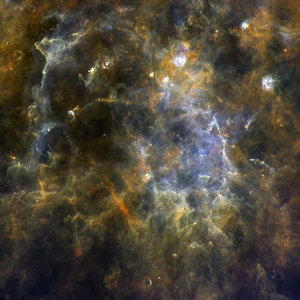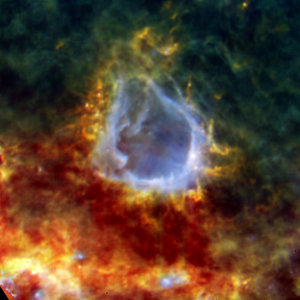Accept all cookies Accept only essential cookies See our Cookie Notice

About ESA
The European Space Agency (ESA) is Europe’s gateway to space. Its mission is to shape the development of Europe’s space capability and ensure that investment in space continues to deliver benefits to the citizens of Europe and the world.
Highlights
ESA - United space in Europe
This is ESA ESA facts Member States & Cooperating States Funding Director General Top management For Member State Delegations European vision European Space Policy ESA & EU Space Councils Responsibility & Sustainability Annual Report Calendar of meetings Corporate newsEstablishments & sites
ESA Headquarters ESA ESTEC ESA ESOC ESA ESRIN ESA EAC ESA ESAC Europe's Spaceport ESA ESEC ESA ECSAT Brussels Office Washington OfficeWorking with ESA
Business with ESA ESA Commercialisation Gateway Law at ESA Careers Cyber resilience at ESA IT at ESA Newsroom Partnerships Merchandising Licence Education Open Space Innovation Platform Integrity and Reporting Administrative Tribunal Health and SafetyMore about ESA
History ESA Historical Archives Exhibitions Publications Art & Culture ESA Merchandise Kids Diversity ESA Brand CentreLatest
Space in Member States
Find out more about space activities in our 23 Member States, and understand how ESA works together with their national agencies, institutions and organisations.
Science & Exploration
Exploring our Solar System and unlocking the secrets of the Universe
Go to topicAstronauts
Missions
Juice Euclid Webb Solar Orbiter BepiColombo Gaia ExoMars Cheops Exoplanet missions More missionsActivities
International Space Station Orion service module Gateway Concordia Caves & Pangaea BenefitsLatest
Space Safety
Protecting life and infrastructure on Earth and in orbit
Go to topicAsteroids
Asteroids and Planetary Defence Asteroid danger explained Flyeye telescope: asteroid detection Hera mission: asteroid deflection Near-Earth Object Coordination CentreSpace junk
About space debris Space debris by the numbers Space Environment Report In space refuelling, refurbishing and removingSafety from space
Clean Space ecodesign Zero Debris Technologies Space for Earth Supporting Sustainable DevelopmentLatest
Applications
Using space to benefit citizens and meet future challenges on Earth
Go to topicObserving the Earth
Observing the Earth Future EO Copernicus Meteorology Space for our climate Satellite missionsCommercialisation
ESA Commercialisation Gateway Open Space Innovation Platform Business Incubation ESA Space SolutionsLatest
Enabling & Support
Making space accessible and developing the technologies for the future
Go to topicBuilding missions
Space Engineering and Technology Test centre Laboratories Concurrent Design Facility Preparing for the future Shaping the Future Discovery and Preparation Advanced Concepts TeamSpace transportation
Space Transportation Ariane Vega Space Rider Future space transportation Boost! Europe's Spaceport Launches from Europe's Spaceport from 2012Latest

Feathery filaments in Mon R2
Thank you for liking
You have already liked this page, you can only like it once!
Fierce flashes of light ripple through delicate tendrils of gas in this new image, from ESA’s Herschel space observatory, which shows the dramatic heart of a large and dense cosmic cloud known as Mon R2. This cloud lies some 2700 light-years away and is studded with hot, newly-formed stars.
Packed into the bright centre of this region are several hot ‘bubbles’ of ionised hydrogen, associated with newborn stars situated nearby. Here, gas heated to a temperature of 10 000 °C quickly expands outwards, inflating and enlarging over time. Herschel has explored the bubbles in Mon R2, finding them to have grown over the course of 100 000 to 350 000 years.
This process forms bubble-like cavities that lie within the larger Mon R2 cloud. These are known as HII regions and Mon R2 hosts four of them, clustered together in the central blue-white haze of bright light — one at the very centre, two stretching out like butterfly wings to the top left and bottom right, and another sitting just above the centre.
Each is associated with a different hot and luminous B-type star. These stars can be many times the mass of the Sun and usually appear with a blue hue due to their high temperature.
Astronomers have found that the hot bubbles in Mon R2 are enveloped by vast clouds of cold, dense gas, sitting within the filaments that stretch across the frame. In stark contrast to the gas in the hot bubbles, these clouds can be at temperatures as low as –260 °C, just above absolute zero.
This particular cluster of HII regions has been studied by Pierre Didelon and colleagues as part of the Herschel imaging survey of OB young stellar objects, or HOBYS, programme. This image combines multiple Herschel observations obtained with the PACS and SPIRE cameras and has been processed to highlight the cloud’s clumpy complex of filaments, visible here in great and dramatic detail.
-
CREDIT
ESA/Herschel/PACS/SPIRE/HOBYS Key Programme consortium -
LICENCE
ESA Standard Licence

From oldest to youngest: a line of star nurseries

Herschel reveals filaments in the Serpens Core

Chaotic web of filaments in a Milky Way stellar nursery

Star formation on filaments in RCW106















 Germany
Germany
 Austria
Austria
 Belgium
Belgium
 Denmark
Denmark
 Spain
Spain
 Estonia
Estonia
 Finland
Finland
 France
France
 Greece
Greece
 Hungary
Hungary
 Ireland
Ireland
 Italy
Italy
 Luxembourg
Luxembourg
 Norway
Norway
 The Netherlands
The Netherlands
 Poland
Poland
 Portugal
Portugal
 Czechia
Czechia
 Romania
Romania
 United Kingdom
United Kingdom
 Slovenia
Slovenia
 Sweden
Sweden
 Switzerland
Switzerland























